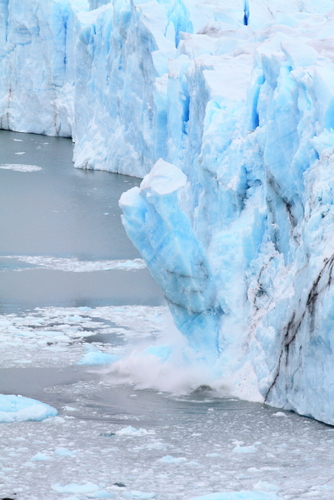Ablation by iceberg calving & sublimation
Glaciers which flow down to sea level and terminate in seawater are known as tidewater glaciers. Other glaciers terminate in freshwater lakes rather than reaching the sea. For these glaciers, there is a second way in which they can lose mass, by iceberg calving. This may be in addition to melting if the air temperature is warm enough (e.g. a glacier in southern Greenland, where summer air temperatures can reach 10-15°C) or it may be instead of melting, where air temperatures do not get above freezing (e.g. in Antarctica). Iceberg calving is not as seasonal as summer melting, as icebergs can calve at any time of the year.
It is also possible for a glacier to lose mass by a third method – sublimation. This is where ice turns directly to water vapour without going through the stage of being liquid water. It happens in some areas of Antarctica which are known as blue ice areas (Ligtenberg et al. 2014). It is much too cold for liquid water to exist here, but due to intense solar radiation, some of the ice molecules are sublimated, and hence the glacier loses mass.
